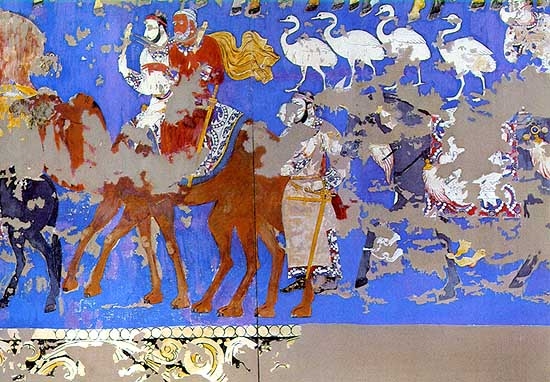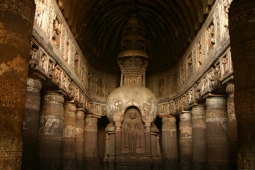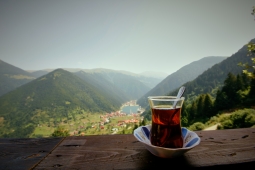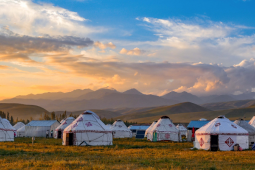Cultural Selection: The Afrasiab Paintings
Photograph by Thorsten Greve. © Association pour la Sauvegarde de la Peinture d’Afrasiab and Freer Gallery of Art and Arthur M.During the height of the Silk Roads, numerous trade routes passed through the territories of the Sogdians who inhabited city states such as Samarkand, Bukhara, Khujand, and Panjikent, located in present day Uzbekistan, Tajikistan, Kazakhstan, and Kyrgyzstan. These cities, and their merchants, played a significant role in the development of both international trade and intercultural exchange along the Silk Roads. So prominent was their influence in terms of trade, that the Sogdians’ language often served as the lingua franca for exchange in some parts of Asia from the 4th century CE onwards. In terms of the trade of silk specifically, the Sogdians served as the primary intermediaries between China to the East and the Parthians (247 BCE – 224 CE) to the West and their role is attested to in numerous sources from China and across Central Asia including written texts and great works of art.
One outstanding and rare surviving examples of Sogdian art is the Afrasiab Painting, sometimes referred to as the Ambassadors Painting. It dates from the 7th century CE and was uncovered on the walls of a private house at a site in the ancient city of Afrasiab situated near present day Samarkand, Uzbekistan. Although the exact interpretation of the painted scenes, which cover four walls of a single room, is still debated by scholars, certain features are clear. When considered together in its entirety, the mural has revealed much about the multicultural and interconnected world the Sogdians inhabited, as well as their role as important diffusers of culture along the Silk Roads.
The paintings display an incredibly high level of skill in complex portrayals of various scenes from life along the Silk Roads. Each of the interior walls of this reception room depict a different society with which the Sogdians had mercantile ties and interactions. They include China (depicted on the northern wall), Samarkand and the Iranian world (southern wall), and the Indian Subcontinent (represented on the eastern wall).
The eastern wall, although the most deteriorated, includes figures wearing garb and hairstyles from the Indian Subcontinent. It has been hypothesised that this scene was intended to represent, through its use of Hellenistic iconography, the transmission of the science of astronomy from Ancient Greece to the Indian Subcontinent (although the poor condition of the surviving painting on the wall leaves this interpretation up for debate).
In addition, the exact interpretation of the scene on the western wall remains intensely discussed amongst scholars. However, it appears to show a long line of people of different origins, including Turks, escorting delegations from China and the Korean Peninsula. This varied group of people, a number of whom are bearing exotic gifts from the lengths of these trade routes, and wearing embroidered silk and necklaces, appear to be gathering towards the top of the painting which is unfortunately too damaged to be seen clearly. One theory is that this part of the mural depicts a series of ambassadors presenting gifts to the King of Samarkand.
The south wall depicts scenes from Samarkand itself; including a procession of elaborately dressed members of the Kings court with sacrificial animals, including a horse and geese. It is speculated that this scene depicts a Nowruz celebration, the popular New Year rite celebrated in many of the regions encompassed by the Silk Roads which dates back to at least the 6th century BCE. On the opposite side, the north wall shows people dressed in Chinese attire, including a group of riders hunting wild cats and a group of ladies boating.
Despite the differing possible interpretations of the painting scene, it remains clear that it was intended to be a representation of the vast reach and intercultural influences of this Sogdian city state. The paintings provide insight into an incredibly well connected world of mutual influences. The murals use calendar based references to refer to different locally and regionally celebrated festivals, some of which, such as Nowruz, are still celebrated today. They also provide insight into a shared language and culture of gift giving, celebration, and ritual, and are an important reminder of the long lasting and far reaching shared heritages of the people who occupy these regions of the Silk Roads today.
Indeed, to the present day, hundreds of festivals take place every year along the lengths of the Silk Roads. These range from social and cultural rituals and religious ceremonies to sporting events and artistic displays. These expressions, many of which are passed down from generation to generation, embody the cultural identity of the people who live along the Silk Roads. Communities, in coming together at symbolic moments of the year, are unified in celebrations that display traditional clothing, food, music, dance, and crafts of all kinds. These festivals remain, as they have been in the past, great opportunities for exchange, as depicted on this fascinating example of surviving Sogdian art.
The UNESCO Silk Roads Programme presents many further examples of the art and artefacts of the Silk Roads currently situated in museums and within archaeological sites throughout the world, in countries along the Silk Roads and beyond.
See Also
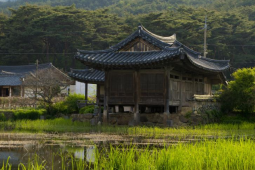
Intercultural Design Elements in Relief Sculpture from Silla, the Korean Peninsula
From the 7th century onwards the city of Gyeongju, the capital of Silla during the Three Kingdoms (57 BCE – 668 CE) and later Unified Silla (668 – 935 CE) periods, developed to become a major trade centre in the Korean Peninsula.
